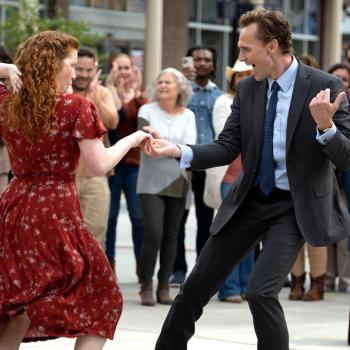There’s a big controversy these days surrounding Buffy the Vampire Slayer creator Joss Whedon and how he treated actresses on the set, a reversal of the time when he was heralded as a hero of feminism for creating a female character with superpowers.
Of course, if you give anyone superpowers, they usually win fights. They are powerful and dominant, because of their superhuman abilities. In this cultural moment, we think that’s more amazing and noteworthy when it’s a woman. I get why, because people believe that it somehow evens out an historical perception of women being oppressed.
Ok, fine, but so what? It’s fun, a literary metaphor for society, and entertaining storytelling, but it has very little to do with the daily lives of women and girls. Unless fantasy becomes real, and we wake up with superpowers, we’re left dealing with the world as it is.
And in that world, women do not have superpowers, and, as a general rule, should not rely for dominance on physical strength.
So, to me, FBI Special Agent Dr. Dana Scully of The X-Files is, hands-down, the more impressive and powerful female character, as compared with Buffy Summers of Buffy the Vampire Slayer.
Full disclosure: As a nationally syndicated staff writer for a division of Tribune Company, I covered Buffy the Vampire Slayer from its premiere in 1997 to its finale. I also covered The X-Files, which launched in 1993, for much of its run. I can say unequivocally that I have seen every episode of the initial runs of both shows (including the X movies — but I’m not going to discuss the short-lived revival, because, well, if you saw it, you know why).
So, when I speak about Buffy vs. Scully, I come from a place of knowledge.
And I’m going to do that annoying thing of sometimes talking about Buffy and Scully as if they were real people, mostly because I’m not fond of trying to mind-read why their creators (Chris Carter, for Scully) did what they did. I’m a writer, and half the time I can’t tell you why I did what I did, or if I do, it’s probably more of a justification after the fact than a real reason.
But, unlike real people, I can’t judge these characters on the totality of their lives, only on the slices of their lives that the writers have given us, and what those slices say about women and power.
Here’s my argument (your results may vary):
How Each Came to Fight Evil
Buffy was granted her powers, as the Chosen One. Her family is ordinary, and until she was given superstrength, healing abilities, etc., Buffy was an ordinary high-schooler. Becoming a vampire slayer wasn’t her choice. It was imposed upon her. Yes, she took it on, but really, she didn’t have much of an option. And she was underage, which, in retrospect, is sketchy.
Scully, on the other hand, was there entirely of her own volition. She chose to go to medical school. She chose to join the FBI. At first, she’s stuck with FBI partner Fox Mulder and his obsessive search for aliens, but she didn’t have to stick with him. At peril of her career, she wanted to stay.
What Each Brought to the Table
Mentor and father-figure Giles had to teach Buffy how to use the powers she was given (and, every now and then, she teaches him something). I’m not taking anything away from Buffy’s evolution as a fighter and a leader, but she didn’t earn what brought her to the table in the first place.
Scully, on the other hand, brings her hard-won education, professionalism, compassion, maturity and curiosity, along with a stubborn refusal to give up on her Catholic faith. All these are her personal accomplishments and acts of the will, achieved before she took up the fight.
The Sexiness Quotient
Buffy, as played by Sarah Michelle Gellar, is a perky, attractive blond teen, who often dresses in skimpy attire, including lots of leather, short skirts and tank tops. She’s very fashion-forward, and always looks good, even when (maybe especially when) slaying vampires. This was The WB and UPN, so there wasn’t any actual nudity in the show, but the sexiness quotient was definitely turned up.
With Scully, played by redhead (for the show, not in life) Gillian Anderson, not so much. She appeared in her underwear briefly in the pilot, but after that, Scully was professionally dressed (there was a brief semi-nude scene, but that was way later, in one of the movies). The Fox show didn’t even find the usual excuses to show her in a lacy nightie (Scully wore silk, button-up pajamas if we came upon her at night), a bikini or running shorts, or some other general state of undress.
Mulder, though, was another matter. David Duchovny’s chest made regular appearances (which may explain the sci-fi show’s larger-than-usual female audience). For Scully, though, the sexiness quotient was turned down. Scully wasn’t there to be a sex object, and she didn’t try to be one.
So, in terms of the kinds of female power that exists in the real world, it’s Scully all the way.
She didn’t rely on supernatural abilities or magical weapons. Scully wielded her mind, heart and soul. While women may never fight aliens and weird creatures — and we may not all be doctors AND FBI agents — Scully’s life achievements are just that, achievable.
I love a superhero story as much as the next geek, but giving female characters superpowers doesn’t do anything to advance the cause of real women. Fans may enjoy watching them beat up on demons or evil villains, but for me, Scully was an ordinary woman who found herself in an extraordinary situation and triumphed.
With her sci-fi sisters Sarah Connor of The Terminator and Ripley of Alien, she shows that women don’t need magic or fantasy abilities to fight the good fight — they just need what God has given them, as women.
Blasts from the past …
https://youtu.be/ngf3DL5L5so
Image: Shutterstock
Don’t miss a thing: Subscribe to all that I write at Authory.com/KateOHare















